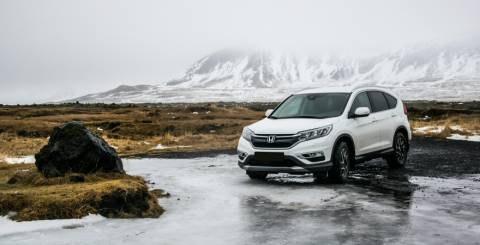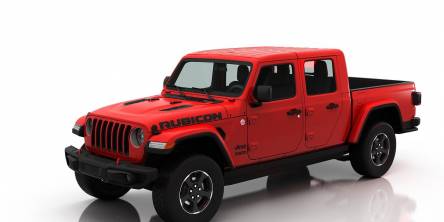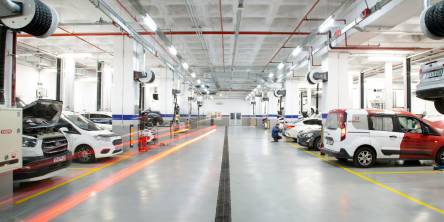How to Transform Your Car's Appearance with a DIY Paint Job

Why Consider a DIY Car Paint Job?
Have you ever considered giving your car a fresh look without the hefty dealership bill? A DIY car painting project might be the creative solution you’re searching for. Not only does it offer a cost-effective way to change your car’s color, but it also presents an opportunity to customize your vehicle in a way that truly reflects your style. Curious minds often ask, can you paint your own car? The answer is a resounding yes, provided you put in the proper prep work and have the right materials.
While professional work has its allure, there’s something deeply satisfying about rolling up your sleeves and taking charge of your car's look yourself. With detailed guidance, even those new to car painting can achieve an impressive and professionally polished finish. This endeavor doesn't just beautify your car but also leads to a deeper appreciation of your vehicle's aesthetics and an understanding of the creative process involved.
Essential Tools and Materials
Embarking on your DIY painting project entails gathering the right tools and materials. At the top of your shopping list should be a quality spray gun and a reliable air compressor. These are fundamental to achieving an even coat of paint on your car’s surface. Fine-grit sandpaper, masking tape, and plastic sheeting are also indispensable for prep work.
Delve into the world of automotive-grade paints to find the various options available. From enamel to polyurethane, knowing the attributes of each is crucial to selecting the right paint for your needs. Some paints offer better color retention and UV resistance, which should be considered if you live in an area with harsh weather conditions. Ensure you have protective equipment, such as masks and goggles, to handle these materials safely. Safety is paramount when working with chemicals and solvents often present in car painting products.
Preparing Your Car
Clean the Surface: A crucial first step is thoroughly washing your car to remove dirt or grease that could interfere with paint adhesion. Using a strong degreaser ensures a clean surface. This step is essential because even a small amount of residue can impact the overall quality of the finish.
Sand the Old Paint: Achieving a smooth canvas is essential. Sand the existing paint with fine-grit sandpaper until it feels completely smooth under your fingertips. This helps paint adhesion and removes any previous imperfections or ruts in the car's surface.
Mask Off Areas: To protect areas like windows and trim, carefully apply masking tape and plastic sheeting. This will prevent unwanted paint from covering parts of the car that should remain untouched. Be meticulous; this part of the preparation will define the crispness of the edges when the job is finished.
Choosing the Right Paint and Technique
Paint selection plays a significant role in the quality of your car’s new look. Solvent-based paints are renowned for their durability, but water-based options are making strides for their environmental friendliness and adaptability to color mixes. Testing your painting technique on a spare panel is beneficial to acclimate yourself to the spray gun's behavior and the paint's flow.
Consider the climate and typical weather conditions where you reside, as they can influence the type of paint and application method. Humidity and temperature can affect how the paint dries and sets, so plan accordingly to work in optimal conditions.
Step-by-Step Painting Process
Primer Application: Begin by applying a coat of primer. This undercoat promotes the adhesion and longevity of the paint. Ensure the primer is thoroughly dry before proceeding to prevent any interaction affecting the final color.
Base Coat: Apply the base coat evenly, maintaining a steady hand to avoid streaks. Keep the nozzle approximately six inches from the surface and move smoothly and sweepingly. Develop a rhythm to ensure consistent application throughout.
Clear Coat: Finish the painting process with a clear coat to add shine and protection. This layer should be applied precisely to avoid drips and ensure a flawless finish. The clear coat is vital in protecting against UV rays and potential scratches.
Troubleshooting Common Problems
Even the most prepared DIY enthusiast might encounter mishaps like orange peel texture or paint runs. Address these by gently sanding the area with finer-grit sandpaper once the paint is fully dry, followed by carefully reapplying the topcoat. For further guidance, resources such as Cars.com provide detailed troubleshooting suggestions. Understanding these issues early can save time and enhance the final result.
Maintaining Your New Paint Job
After successfully painting your car, proper maintenance will ensure that the new finish remains vibrant for years. It's advisable to abstain from washing the car for at least two weeks to allow the paint to cure fully. Over this period, avoid exposing your vehicle to extreme weather conditions or using harsh chemicals on its new surface.
When washing your car, use a gentle car wash soap paired with a soft microfiber cloth to prevent scratches. Regular waxing can further protect the paint and add a layer of shine, keeping your DIY job fresh and intact. Taking these careful measures will ensure that your hard work stands the test of time, proving that a professionally inspired DIY project can result in stunning visuals and long-lasting durability.
Similar Articles
Before you lease a car, you need to understand lease agreements, research the market, and be aware of the ways some car leasing companies may try to manipulate you.
Learn how to safely remove your Jeep hardtop alone. Follow step-by-step tips, use the right tools, and enjoy open-air adventures with confidence.
When it comes to getting a new car, one of the biggest decisions you’ll face is whether to lease or buy. Both options have their pros and cons, but making the right choice depends on your financial goals, driving habits, and personal preferences
Find a reliable car shipping service with our guide! Learn about pricing, transport options, insurance, reviews, and support to make a safe, informed choice.
Cars face different challenges as seasons change. The scorching summer sun can damage paint and interiors, while winter road salt corrodes metal components. Rain in spring and fall brings its own set of issues with moisture and organic debris.
Accessorizing your Chevy Malibu improves your driving experience with practical benefits. The global car accessories market, worth over $442 billion in 2023, is projected to expand significantly, showcasing a robust movement toward vehicle customization.
Regardless of the age, the car can be maintained in decent condition both by the hands of professionals (whom the conditions and means allow) and by one's own efforts. Taking care of the car will not only allow you to maintain an attractive appearance but also reduce the costs of its maintenance
Discover stress-free travel with black car services! Enjoy luxury, punctuality, and personalized comfort for a seamless day of exploration and relaxation.
Learn how to source reliable replacement parts for specialty car brands like Porsche, Tesla, and Mercedes-Benz, ensuring performance and compatibility.









